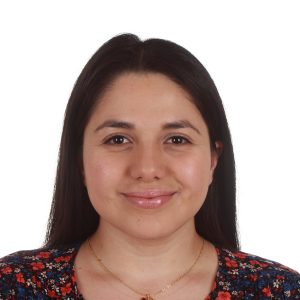Lecture 1.1
Title: Learn about different fluorescent labeling techniques used in single-cell research
Lecturer: Dr. Linda Forero Quintero
Lecturer Website: https://www.engr.colostate.edu/~munsky/
Lecturer Email: linda.forero_quintero@colostate.edu
Learning Objectives:
Learn about different labeling methods employed for single-molecule imaging.
Learn about different labeling techniques employed in fixed cells.
Learn about different labeling techniques employed in live-cells.

Dr. Linda Forero Quintero obtained her Ph.D. in natural sciences in 2016 from the University of Kaiserslautern, Germany. During her Ph.D. research, she worked on Neurosciences and Brain Energy Metabolism. Dr. Forero characterized the role of monocarboxylate transporters (MCTs) during epileptiform activity using pH and Ca2+ imaging. Currently, Dr. Forero is a postdoctoral scholar at Colorado State University, working under the supervision of Dr. Brian Munsky and Dr. Tim Stasevich. During the first part of her postdoc, Dr. Forero studied the timing, kinetics, and spatial organization of RNA Polymerase (RNAP2) phosphorylation along a single-copy gene in living cells. She combined multi-color, single-molecule microscopy with fluorescent antibody-based probes that specifically bind to unphosphorylated and phosphorylated forms of the CTD tail of RNAP2 in living cells. In he present research, Dr. Forero is investigating how to improve smFISH methodology to reduce experimental costs by predicting the most-cost effective experimental designs and automating image collection and processing.
Title: Learn about different fluorescent labeling techniques used in single-cell research
Abstract: This lecture describes different methods to label proteins for single-molecule imaging. It includes antibodies (full antibody, Fab, Fvs, or nanobodies), epitope tags, small molecule probes, biotinylation, and bioorthogonal labeling, as well as different fluorophores, such as organic dyes, quantum dots, minor groove binding dyes, and fluorescent proteins. Then, other labeling techniques employed in fixed cells are discussed, like immunolabeling and Single-Molecule in situ Hybridization (smFISH). The second part of the lecture describes different labeling techniques employed in live cells to visualize the synthesis of mRNAs (transcription) and proteins (translation) in real time. Visualization of transcription is possible using MS2 & PP7 systems, FabLEM technology, dCas9 labeling, and Genetically encoded modification-specific intracellular antibody (mint-body) probes. In contrast, visualization of translation events is possible by employing the Nascent Tracking Chain methodology, which recently evolved to observe processes like mRNA structure, Recruitment, ORF selection, Cell localization, and Elongation and Frameshifting. Additionally, an emerging label-free method is also described. In summary, this lecture aims to generally describe the most common ways to visualize single-molecule events such as transcription and translation in fixed and live cells.
Suggested Reading or Key Publications:
- Links to Relevant Websites relevant to the lecture:
https://www.labxchange.org/library/pathway/lx-pathway:ad7fbf7e-9fee-4989-b8c6-e5737d21cc91
https://www.ibiology.org/online-biology-courses/microscopy-series/fluorescence-microscopy/
- Question 1: Imagine you need to mark simultaneously three different events in your cells. How do you choose the right fluorophores, so their emission spectra do not bleed into one another? Use the fluorescence spectra viewer below to determine which combination of fluorophores would work to that aim.
https://www.thermofisher.com/order/fluorescence-spectraviewer#!/
- Question 2: Maria is doing a rotation in Prof. Wilson lab, an expert in smFISH. She desires to study simultaneously the expression of several genes involved in a metabolic pathway. However, she is unsure about which type of smFISH to use. Based on what was discussed in this module which type smFISH will you advise Maria to try?